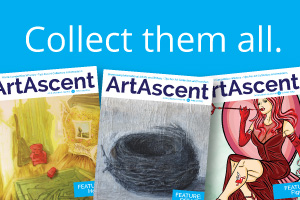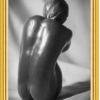Quality and investing in art
The more you travel, the more you visit commercial and public galleries and gain greater exposure to the world of contemporary art, which leads to more reliable judgement of quality. Looking at a large quantity of fine art is a necessity for the astute collector as an investor.
When you are ready to acquire a work of contemporary art, making a final decision is often a challenge. First, you have to like what you choose to buy. Even though you have exercised your eye by examining many contemporary art works, you may want to assure yourself that your choice is a work of high quality and thus likely to continue to appeal to you over time and, in the best of all possible worlds, increase in value significantly.
It is no secret that great works of art command the highest prices at auction today and will likely do so tomorrow. At the top end of the art market, a great work can be had for a large – sometimes unbelievably large – sum and, overtime, it will deliver abundant capital gains. It seems to be almost a no-brainer to buy a work by an art star such as Damien Hirst, Peter Doig, Gerhard Richter or Jeff Koons and be guaranteed serious capital gains over the next few years. This is, of course, not absolutely true. Some of the works by these artists will appreciate more than others. In the more earthly end of the art market this also holds true. Some pieces by emerging and established artists will appreciate in value more than others they have created. Your goal as an art investor is to determine which ones these are.
There are no hard-and-fast rules for evaluating whether a work is great or will be seen as great in the future. Just because there may be diverging opinions on quality in art does not mean that there is a complete absence of criteria for establishing quality. Because you have acquired over time a trained or experienced eye in looking at contemporary art, you should, to some extent, trust your own judgement. When one advises a knowledgeable collector, “buy what you like,” this trust is implied.
Almost invariably, a collector will be attracted by a work that has impact or strength. It will be unusually powerful. This is what causes it to stand out. It will stack up with the rest of an artist’s work as the strongest and – in comparison with all the other contemporary art one has seen – it will shine as among the best. Before one can conclude that a work is among an artist’s best, it is necessary to determine the goal that the artist has set for himself or herself. The best or strongest of an artist’s works will be the ones that achieve these goals.
Strength in art is not necessarily connected with strong colours, bold drawing or bravado in composition. Some of the strongest works of art are subtle. It may take time to appreciate their strength or superiority. If there is a possibility that this is the case, a collector will take a work home on approval, look at it over time, compare it with other works in their collection and test it in various places in the home or office. If the work of art looks better over time, if its impact increases, it is undoubtedly a strong work of art. If over time it vanishes from one’s consciousness or loses attraction to the eye, then it is a work of lesser quality. It must be accepted that all of the works created by great artists are not of the same quality. Some works achieve the artist’s goals and others don’t. Some have visual impact and some don’t. Your mission as an investor in art is to buy only the strongest of artworks for those are the ones that will enjoy the greatest appreciation in both the aesthetic and monetary spheres.
By Dr. Alan McNairn









